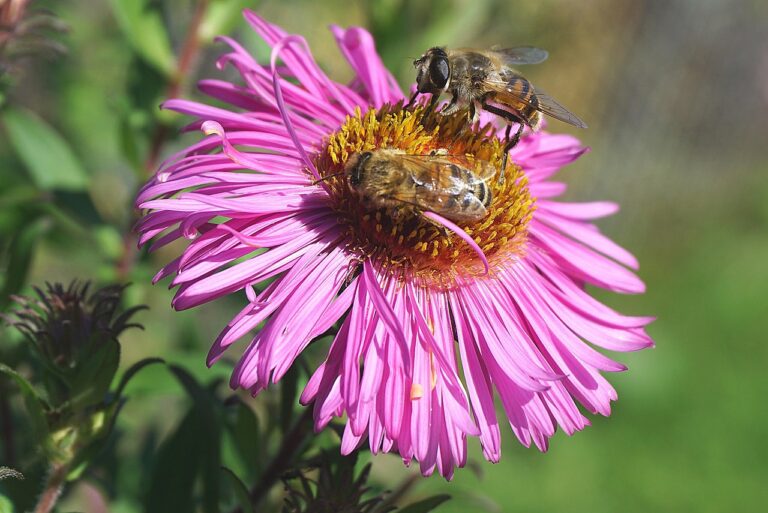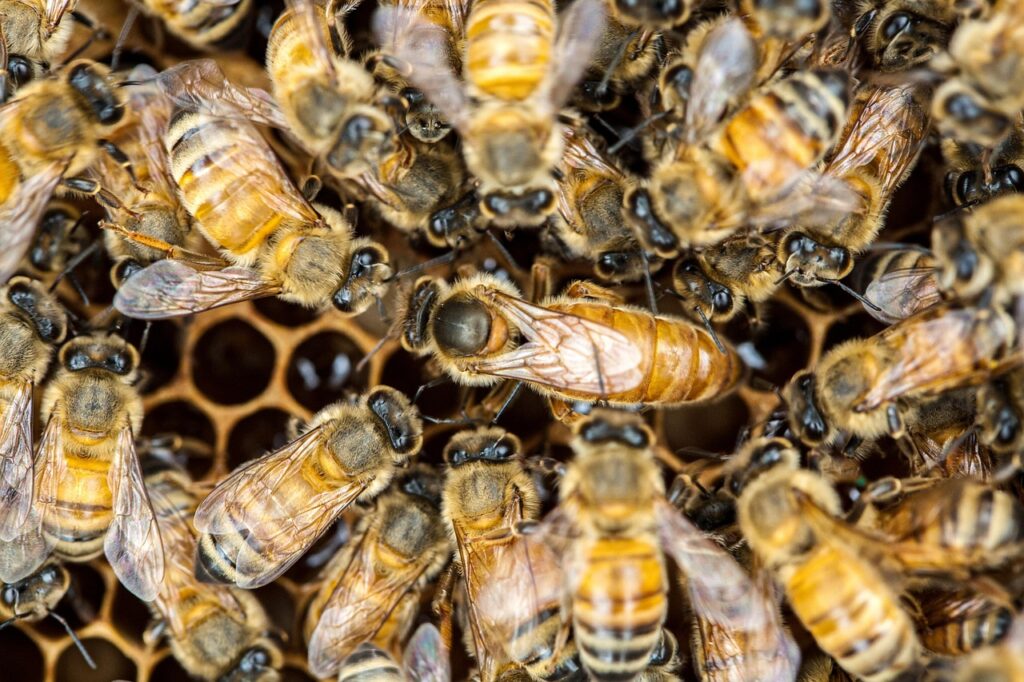Do you know what types of flowers bees prefer during their field activity? Here’s the buzz about it!
Bees show a strong preference for flowers that provide abundant nectar and pollen—essential resources for their survival and for the health of their colonies.
The types of flowers bees prefer during their field activity generally share certain traits: bright colors (especially blue, purple, yellow, and white), simple or open shapes for easy access, and rich nectar and pollen supplies[1][2][3][4].
Common flowers that bees prefer include:
• Lavender: Highly aromatic and flowers profusely, attracting honeybees and bumblebees for both nectar and pollen[1][2][4].
• Sunflowers (Helianthus annuus): Large, easy-to-approach flower heads rich in pollen[1][5][3][4].
• Clover and wildflowers: Native clovers and diverse wildflower mixes are especially attractive, supporting local bee species[1].
• Coneflowers (Echinacea purpurea): Popular for their abundant, long-blooming nectar supply[6][1][7][3].
• Bee balm: Highly attractive to honeybees and native bees, offering nectar through the summer[7][8].
• Hyssop and Anise Hyssop (Agastache): Long-blooming, aromatic flowers adored by many bee species[9][7][3].
• Goldenrod: Vital late-season source of nectar and pollen as fall approaches[7][3].
• Asters: Essential in late summer and fall, providing valuable resources when other flowers fade[9][3].
• Zinnias: Especially appealing due to their open, easy-to-access flowers and a broad bloom period[7][8].
• Borage: Known for its blue, star-shaped flowers packed with nectar, rapidly replenished after visits[8].
• Other favorites: Lupine, marigold, black-eyed Susan, snapdragon, poppy, primrose, sunflower, borage, milkweed, wild indigo, and geranium are also frequently visited by bees and often recommended in pollinator gardens[6][1][5][7][2][3].
Important points:
• Bees are drawn to gardens that provide blooms across the whole growing season, from early spring (crocus, snowdrops, hyacinths) to late fall (asters, goldenrods, Joe-pye weed)[5][7][3].
• Flower color, scent, and shape matter: bees especially like blue, purple/violet, and yellow flowers, and generally cannot see red[4].
• Native wildflowers are particularly valuable, as they are adapted to both the local climate and the preferences of native bee species[1].
Choosing a diverse mix of these flowers in various bloom times supports bees throughout the year and helps maintain both their health and broader ecosystem services.
⁂
1. https://blythewoodbeecompany.com/blogs/news/flowers-that-attract-bees
2. https://www.housebeautiful.com/lifestyle/gardening/g65449032/bee-friendly-flowers-for-garden/
3. https://www.aol.com/15-beautiful-flowers-attract-bees-130034954.html
4. https://www.bobvila.com/articles/flowers-that-attract-bees/
5. https://www.perfectbee.com/a-new-beekeepers-journal/gardening-for-beekeepers-flowers-honeybees-love
6. https://www.buddhabeeapiary.com/blog/what-flowers-do-honeybees-like
7. https://www.familyhandyman.com/list/flowers-for-bees/
8. https://www.gardendesign.com/flowers/bees.html
9. https://www.swansonsnursery.com/blog/flowers-that-attract-bees-butterflies-hummingbirds



